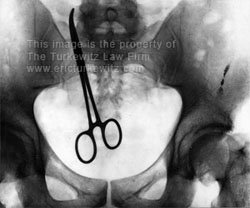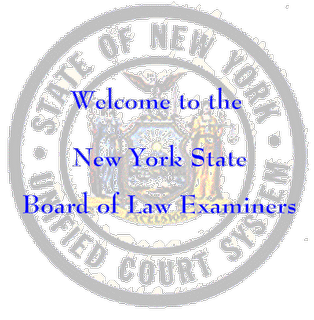
I feel like a broken record sometimes, rebutting the same disingenuous tort “reform” nonsense over and over. The latest comes from Forbes (via PofL), in a piece written by Manhattan Institute fellow John Avlon, regarding the amount that New York City pays out in settlements and verdicts.
His comments in italics with my responses:
The city’s $568 million outlay in fiscal year 2008 was more than double what it spent 15 years ago.
Only double? So then, when you account for inflation, there really hasn’t been much change at all?
Sidewalk “slip-and-falls” cost taxpayers $54 million…
Sidewalk cases against the city have mostly evaporated as a result of a change in the law six years ago. In 7-210 of the Administrative Code of the City of N.Y the city shifted liability for the miserable state of our sidewalks to most of the abutting landowners.
Suing the city is big business. Ninety percent of the city’s claims costs come from personal-injury lawsuits; of these, medical-malpractice suits are by far the priciest, draining $145.3 million from city coffers in fiscal year 2008–a particular vulnerability for a self-insured city with 11 public hospitals.
Has it occurred to you that the city’s hospitals get sued often because most of them suck? If you think the city is vulnerable, what about the folks that are forced to use those hospitals? Here’s a suggestion on how to reduce city malpractice claims: Improve the hospitals. I know, it’s a crazy notion.
Nearly 90 cases against the city were settled for amounts over $1 million, and the average settlement was nearly $75,000–up from $14,396 in 1984. (The city settles most suits to reduce the costs of going to trial.)
The city settles cases when the facts warrant it. They take verdicts when the facts warrant it. The idea that the city settles a million dollar case simply to avoid the cost of trying it is empty political rhetoric that is wholly unsupported by analysis. It’s gibberish, and every medical malpractice attorney in this town knows it, defense included.
Why is Gotham such a litigation target? Blame New York State’s laws, which have made the city a gold mine for personal-injury lawyers.
Having already admitted that medical malpractice cases are the biggest problem, don’t you think you should point out that New York has some of the lowest legal fees in the nation for medical malpractice cases? Some gold mine. And perhaps one day you should look at the actual economics of taking a malpractice case in New York.
…the cozy relationship of New York trial-law firms and state lawmakers, who have received $2 million in donations over the last five years from the New York State Trial Lawyers Association.
So how much have Fortune 500 companies made in donations? Seems to me that if you want to do a comparison of donations then you need to actually have something to compare it to.
Under current law, lawyers’ fees in medical-malpractice cases are capped at 10% for all awards exceeding $1.25 million. In recent budget negotiations, Silver reportedly pushed for increasing that cap to 33%–a massive new incentive for lawsuit abuse in the Empire State
Currently, due to the low legal fees, most acts of malpractice are never put into suit. The medical community has de facto immunity from negligence in most cases. Once upon a time conservatives actually believed in personal responsibility for the conduct of people. That seems to have disappeared when it comes to protecting big business with various tort “reform” measures.
A good start would be to place caps on noneconomic damages, such as pain and suffering, as two-thirds of states have done.
Well, that would effectively make victims bear the brunt of the negligence of others. And you think that is good policy? Let the victims get poorer and the tortfeasors walk away?
In Texas, for instance, lawmakers recently imposed a $250,000 cap on noneconomic damages, which not only resulted in dramatically reduced malpractice-insurance premiums for doctors, but also cut the number of all tort lawsuits in half and doubled the number of doctors applying to practice medicine there.
To the determent of the victims. I think we can agree that when you slam the courthouse door shut in someone’s face then the wrongdoers will benefit and the victims will lose. See: Do Texas Med-Mal Damage Caps Work? (What Do You Mean By “Work?”)
But perhaps the single most effective action would be to establish a court of claims for municipal cases to restrain outsize judgments.
Interesting assumption. Some counties have become so notoriously conservative that plaintiffs no longer ask for jury trials. It’s the defendants that are making the requests. Of course, if the city attorneys appear only in front of city judges they will be able to form a more comfortable relationship with each other. Perhaps that is what you had in mind?
One last thought, if you want to “control” lawsuits; why not just abolish them and tell the victims to just piss off? Because we both know that this will be fair, make sidewalks, hospitals and cars safer, and lead to greater accountability by those that currently act negligently. Right?
Related: The False Premises of Medical Malpractice “Reform” (Response to Richard Epstein in WSJ) 6/30/09
—————————-
Elsewhere:
Reasonable people smarter than I am support the idea of reforming the tort system and limiting the rights of victims. But you have to at least pretend to write a balanced article if your are trying to convince the undecided. Otherwise, you are just preaching to the choir. [more]
- Andrew Oh-Willeke @ Wash Park Prophet responds with Tort Suits Not What’s Wrong With NYC:
Rather than securing and paying for medical malpractice insurance, the city’s hospital system “self-insures.” Thus, while medical malpractice insurance premiums don’t show up on the books in other jurisdictions at “lawsuit” related costs, they do in New York City…
John P. Avlon’s … rant against New York City litigation is either fatally incompetent or dishonest. [much more here]
Links to this post:
tort suits not what’s wrong with nyc
forbes, the magazine of big business, has recently released an article arguing that new york city is unfairly subject to too many lawsuits. most of the points that it makes are convincingly rebutted here.
…
posted by Andrew Oh-Willeke @ July 15, 2009 8:08 PM
forbes article on lawsuits in new york
i was tempted to respond to this forbes article on how our tort system and medical malpractice lawyers are ruining new york. but, to save myself some effort, i decided to wait the obligatory fifteen minutes to give the resident new york
…
posted by @ July 15, 2009 12:22 PM
john avlon, “sue city”
manhattan institute senior fellow john avlon, in forbes: new york city spends more money on lawsuits than the next five largest american cities — los angeles, chicago, houston, phoenix and philadelphia — combined.
…
posted by Walter Olson @ July 15, 2009 9:28 AM



